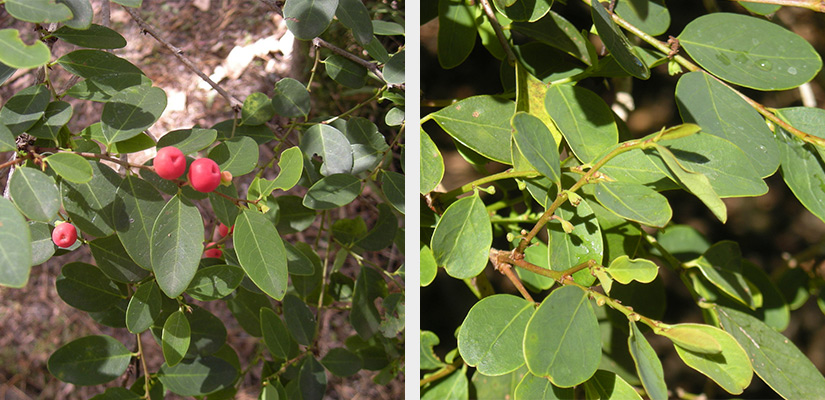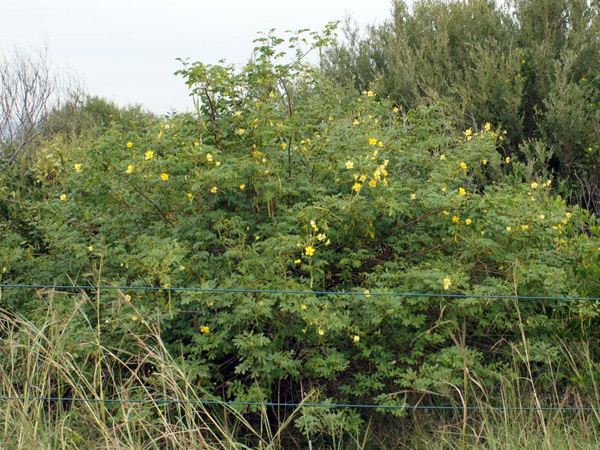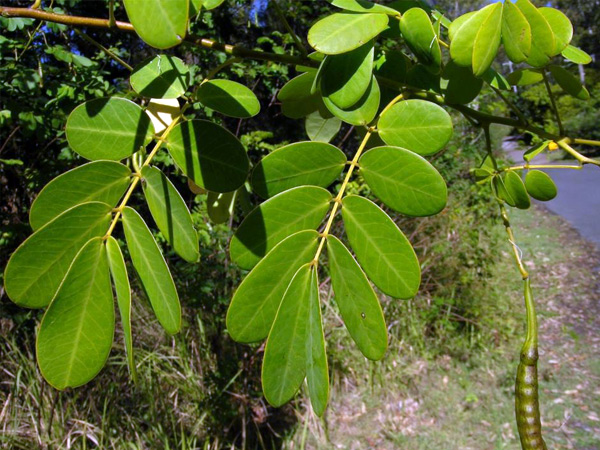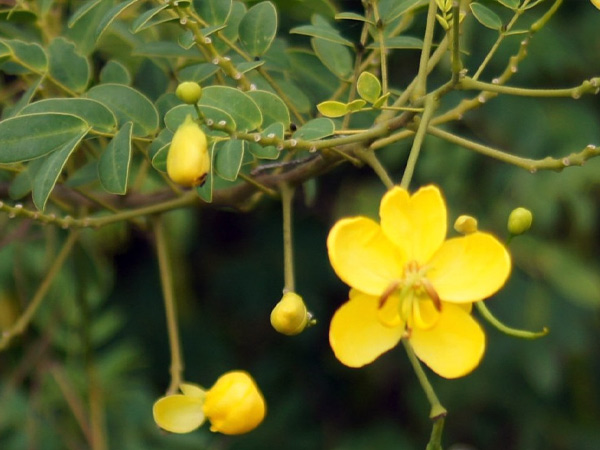Weeds
Cassia – Senna pendula var. glabrata
Also known as: senna
Cassia is tall, spreading shrub. It is a popular garden plant that invades bushland and banks of watercourses.
Profile
How does this weed affect you?
Cassia is popular garden plant that invades native ecosystems, particularly in coastal areas. It is a fast growing plant that can suppress the growth of native species and displace them. It produces large amounts of long-lived seeds.
Where is it found?
Cassia is native to Brazil and Paraguay. It is widely distributed through eastern parts of NSW. It is most common along the coastal or sub-coastal regions of NSW and Queensland.
How does it spread?
Cassia is spread by seed and sometimes by suckers.
What does it look like?
Cassia is an upright, spreading or sprawling shrub usually growing 2-4 m tall, but occasionally reaching up to 5 m. It is distinguished by the absence of spines and prickles.
The stems are multi-branched and become woody with age. Younger stems are green and sparsely hairy, but become hairless and darker as they mature.
Leaves
The compound leaves (made up of leaflets) are 4-8 cm long and are alternately arranged along the stems and borne on stalks 20-40 mm long. Each leaf is composed of 3-5 pairs of dark green leaflets with rounded tips. These leaflets are egg-shaped to oval, with those closer to the stem generally being smaller. They are almost hairless and have a prominent lighter coloured middle vein. There is a small cone shaped gland between the two lowest leaflets of each leaf.
Flowers
The pea-like flowers are bright yellow, about 30 mm across, with five large petals. They are borne in clusters at the tips of the branches, and each flower is on a stalk. These flowers have two or three prominent curved stamens, four or five smaller stamens, and as well as three tiny petal-like structures at their centres.
Fruit (pods)
The fruits are cylindrical pods that hang downwards and are 10-20 cm long. These pods turn from green to pale brown as they mature, contain 5-40 brown seeds.
What type of environment does it grow in?
Cassia is a weed of waterways, gardens, disturbed sites, waste areas, roadsides, closed forests, forest margins and urban bushland in tropical, subtropical and warmer temperate regions.
References
Environment.gov.au (2014). Weeds search. Available at: http://www.environment.gov.au/cgi-bin/biodiversity/invasive/weeds/weeddetails.pl?taxon_id=16954# (Accessed November 2014).
Hosking JR, Sainty GR, Jacobs SWL and Dellow JJ (in prep). The Australian WeedBOOK.
Control
Please contact your local bush care leader.
Reference: NSW Weedwise
Similar natives that are not weeds
An introduced species, invasive or non-native species is a species living outside its native distributional range, but which has arrived there by human activity, either deliberate or accidental. These organisms have often been introduced to areas in which they are not native, usually without much regard to the harm that could result.
In many cases there are native plant species that resemble the introduced variety. If you like the look of the introduced species, why not consider an Australian native species with similar aesthetics instead. You will not only have a beautiful garden, you will also be doing something positive for the local flora and fauna.
-
Breynia oblongifolia
Breynia oblongifolia, commonly known as coffee bush, grows naturally in Australia and New Guinea as shrubs up to 3 m (10 ft) in height. The species produces alternate, ovate leaves 20–30 mm (0.8–1.2 in) long. Small, green flowers are produced in spring and summer, and these are followed by orange or pink berries about 6 mm (0.24 in) diameter that turn black when fully ripe.
The species tolerates wide variety of environments, and is found in coastal tropical rainforests in North Queensland and New Guinea through to cool Eucalypt woodlands in south–eastern New South Wales to arid Acacia woodlands in Western Queensland. This plant proliferates in disturbed areas and can recolonise cleared sites and can pop up occasionally in undisturbed gardens, the species will spread at the expense of fire-dependent species if fire is withdrawn from an ecosystem used to being burnt. This plant supports many different animals that feed on leaves, berries and flowers.
This native shrub may be confused with Senna species which are found in similar habitats, but Senna has opposite leaves (leaflets facing each other in pairs) unlike the alternate leaves of B. oblongifolia, and Senna produces conspicuous yellow flowers followed by leguminous pods in contrast to the inconspicuous flowers and red berries of B. oblongifolia.




